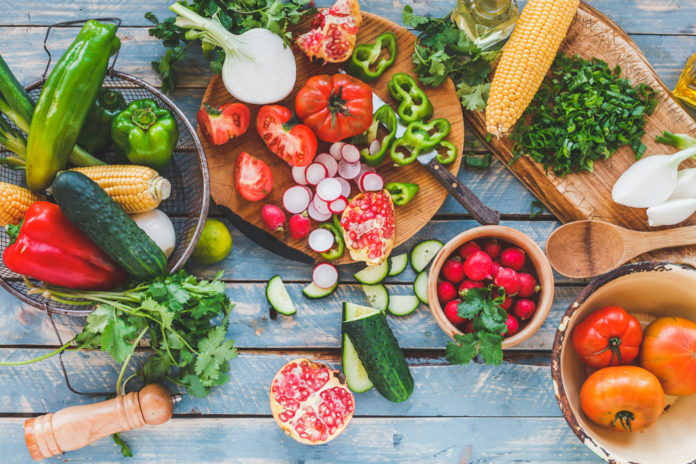This year you have committed to eating better and dieting. But what does that actually entail? With all the nutrition recommendations right at your fingertips, how does anyone know what they should actually be eating? A predetermined meal plan may work, but nutrition experts tend to agree individualized plans boast greater results and sustainment. And since all individuals have different preferences, why should everyone follow the same diet structure? Creating a do-it-yourself (DIY) plan this New Year may be your ticket to boundless success this year!
But What Actually Is a “Healthy” Diet?
First and foremost, healthy diets do not translate to food restrictions. Although limiting the intake of sweets and pastries is commonly necessary, most nutrition experts and dietitians advocate for all foods fitting into the diet, unless a health condition is present and requires diet modifications. But they also tend to agree a healthful diet embodies whole foods, including the following:
Whole Grains
Choose whole grains and wheat products over refined products (think white flours, pastas and breads). Whole grains are mostly rich in fiber and B vitamins and include whole wheat flour and products, barley, oats, quinoa, and couscous and their associated products.
Fresh Produce
Go for colorful fruits and vegetables! When choosing fruits, go for whole fruits and try to skip out on high intakes of juices. Juices are often concentrated with additional sugars and lack fiber. Grapes, pomegranates, olives, tomatoes, and berries are excellent fruit choices. Further reduce the intake of starchy vegetables (such as corn and potatoes) and increase non-starchy veggies, including multicolored bell peppers, asparagus, broccoli, cauliflower, brussels sprouts, spinach, and kale.
Dairy Products
Dairy products are mostly known for their calcium content and ample protein supply. Milks, cheeses, and yogurts are renowned examples but also pay attention to the ingredient and nutrition label when choosing dairy products, as some may contain unnecessary, added sugars.
Lean Proteins
Balance out the meal plate with a lean protein. Protein is extremely valuable, as it can keep hunger stabilized for extended periods of time. Choose leaner proteins such as chicken, turkey, sirloin, fish and shellfish. Plant-based proteins include beans, soybeans, and lentils.
Fats and Oils
Swap out butters and margarines with healthful fats, mostly rich in unsaturated fats. Healthful fat sources include olive and canola oil, nuts and seeds, and avocadoes.
Tips to Create A DIY Diet
1. Establish Goals
A goal is essentially a road map with a projected and desired outcome. When starting a diet or any sort of objective, establishing goals can allow guidelines to fall into place with ease. Goals may include drinking eight glasses of water daily or making it into the gym for at least 150 minute each week. Heading into the New Year with an established goal can allow a better understanding on what actually should occur for its attainment.
2. Identify Barriers
Continuing the visualizing of road map, speed bumps and road blocks may occur. Whether it be limited time to cook dinner or hit the gym, identifying barriers offers the opportunity to redirect and adjust towards them. Overcoming barriers may include the practice of meal prepping or tackling shorter, yet effective in-home workout routines.
3. Small Changes
Figuratively and generally speaking, do not bite off more than you can chew. Embarking on large changes is admirable, but may be setting you up for failure. For instance, instead of cutting out your four daily sodas cold turkey, slowly eliminate soda – cut down to three per day and continue its reduction until it is eliminated.
4. Realistic Introductions
Despite the value in experimenting with various foods, stay realistic with food introductions. If carrots really just are not your favorite, that is fine! There are numerous other vegetables that can be incorporated into the diet and forcing unrealistic expectations may be detrimental to goal success.
5. Count Calories
Although calories are not the core basis of following a healthy diet, it is valuable to learn how calories add up. Especially in the initial stages of dieting, keep a food log or mental note of calories taken in and pay attention to hunger and satiety cues. Naturally reduce calories by going for fiber-filled colorful produce and grains and protein-packed lean protein and lessening amounts of convenience foods and treats, including chips, pastries, and ice cream.
6. Treat Yourself
And lastly and importantly, treat yourself! While practicing the concept of moderation, allow yourself to indulge on favorite treats or snacks. Food is meant to nourish the body and be enjoyed, and eliminating diverse food groups can create diet burnout.
If you are desiring nutritious meals without adding another task onto your plate, let Balance by bistroMD assist in your New Year’s health goals! Balance is an extension off bistroMD, the leader in home diet meal delivery. Balance by bistroMD offers nutritious chef-prepared meals created with fresh ingredients and delivered straight to your doorstep. Its premise of a la carte-style fare diminishes the constraint of pesky minimums, memberships, or recurring orders! Based on the core of bistroMD’s healthy lifestyle philosophy, consumers can achieve their New Year’s resolutions by simply eating better, obtaining greater health, and losing or maintaining weight!








